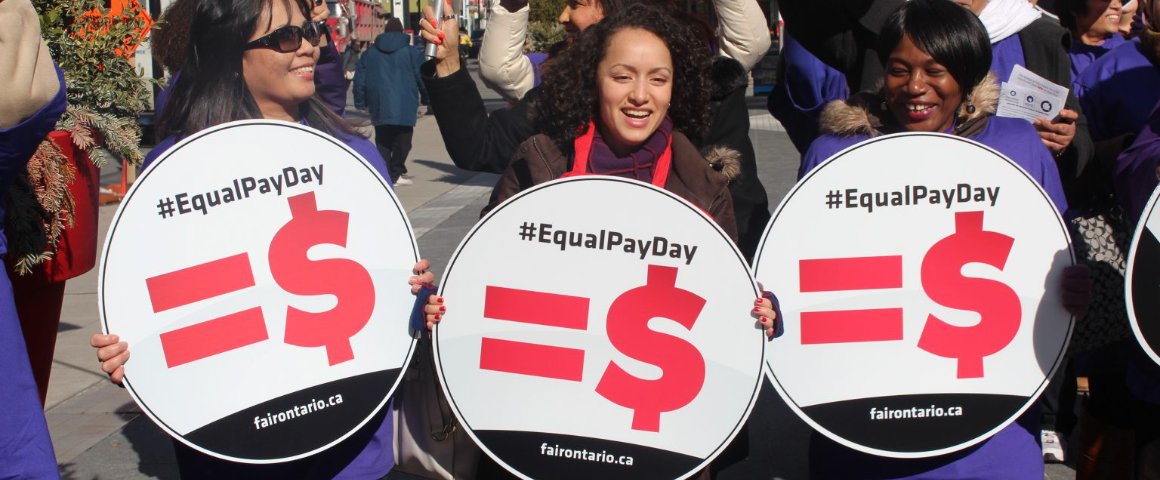Editorial
April 4 is Equal Pay Day, the date on which the average woman worker will have earned what the average man earned in 2022.
Equal Pay Day’s symbolism is powerful. It is a blunt but easily understood reminder that women, on average, have to work more than 15 months to earn the same income as men earn in a year. Imagine getting hired for a job and then being handed paperwork indicating that your work year runs from January to April of the following year, that you actually have to work 3 extra months to get the same pay as your colleagues doing the same work. On an individual basis, practically nobody would stand for it. But it’s the reality faced by over half the population, year after year.
And the fact is, year after year it gets worse because the problem cascades. If a woman started working in January 2022 and had to work until April 2023 to make a “man’s worth” of annual income, then the next year she has to work until early June (since she really only began earning her 2023 income after Equal Pay Day in April). Each year, her annual earnings start to accrue another 3 months later, so that after five years, she is a full year behind.
Calculate this out to her entire working career of, let’s say 40 years, and she has lost somewhere in the neighbourhood of 8 years of income. Given that the average income in Canada in 2022 was $59,300, she will be out nearly $475,000. And that doesn’t include adjustments for inflation, wage increases, promotions, etc.
So, the average working woman can expect to lose around a half-million dollars in wages, just because she is a woman. The effects of this ripple throughout her life, impacting her retirement income, savings, quality of life, etc. And the gender pay gap is substantially worse when it intersects with other forms of discrimination including those based on Indigeneity, racialization, disability, age, sexual orientation or gender identity.
Astonishingly, despite decades of hard work by the labour, women’s and equity-seeking movements, as well as legislation in all jurisdictions prohibiting discrimination in employment, four provinces in Canada do not have pay equity legislation. Saskatchewan, Newfoundland and Labrador and British Columbia only have policy frameworks for negotiating pay equity with some specific public sector employees, while Alberta does not even have that.
Currently, labour and community groups in BC are pressing the NDP provincial government to take real action on the pay gap. They deserve the strongest support in this campaign.
But even where pay equity legislation has been won, women and workers from other equity-seeking groups have had to fight to make sure it is maintained. An example is the case of midwives in Ontario, whose salary was set in 1994 (through the province’s pay equity process) at roughly 90 percent of the salary for an entry level Community Health Centre family physician. However, over the next 25 years, the salary gap widened at an astonishing rate – from an agreed-upon 10 percent gap in 1994 to a massive 56 percent by 2019. The midwives’ case shows the depth to which gender discrimination is rooted in capitalism.
There are roughly 7 million full-time working women in Canada, and with each of them losing an average of $475,000 over her working career, that means capitalism in Canada will effectively “earn” a staggering $3.3 trillion from them. A system that requires that kind of systemic theft to reproduce itself is a system that needs to be replaced.
[Photo: Equal Pay Coalition]
Get People’s Voice delivered to your door or inbox!
If you found this article useful, please consider subscribing to People’s Voice.
We are 100% reader-supported, with no corporate or government funding.




